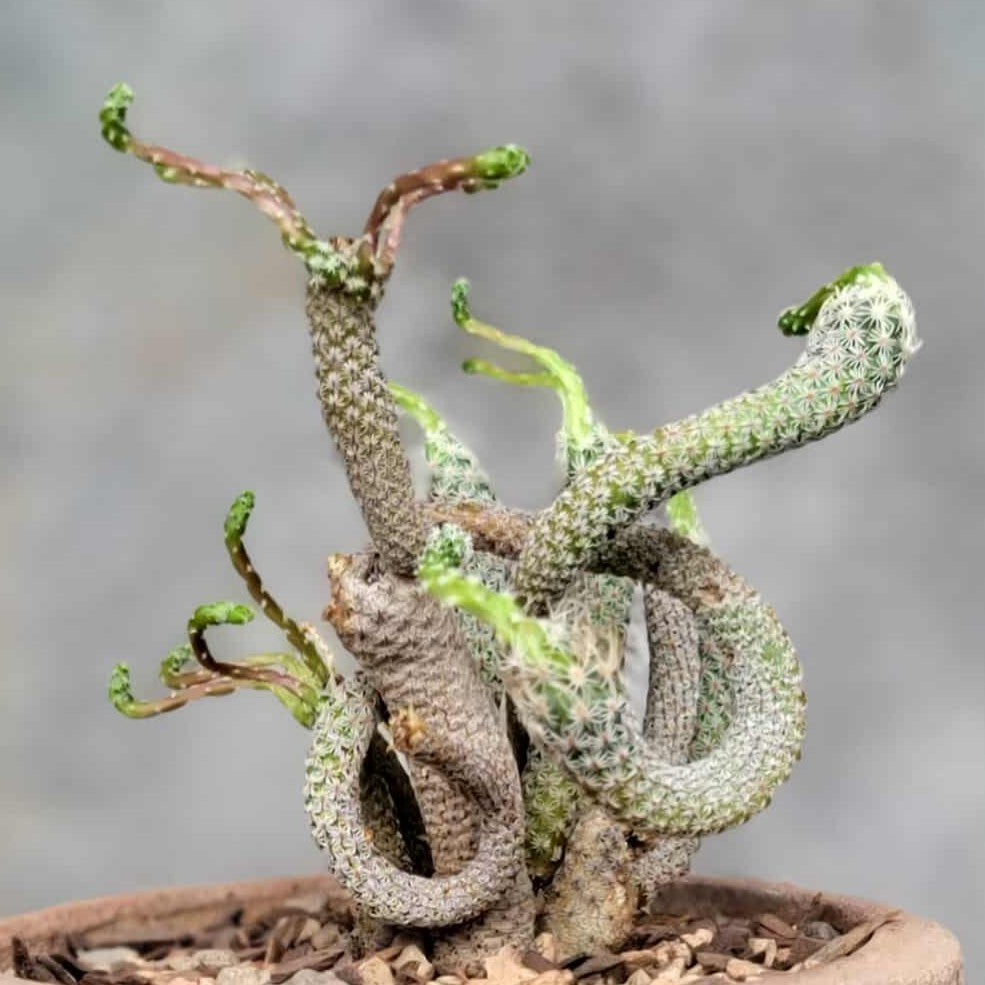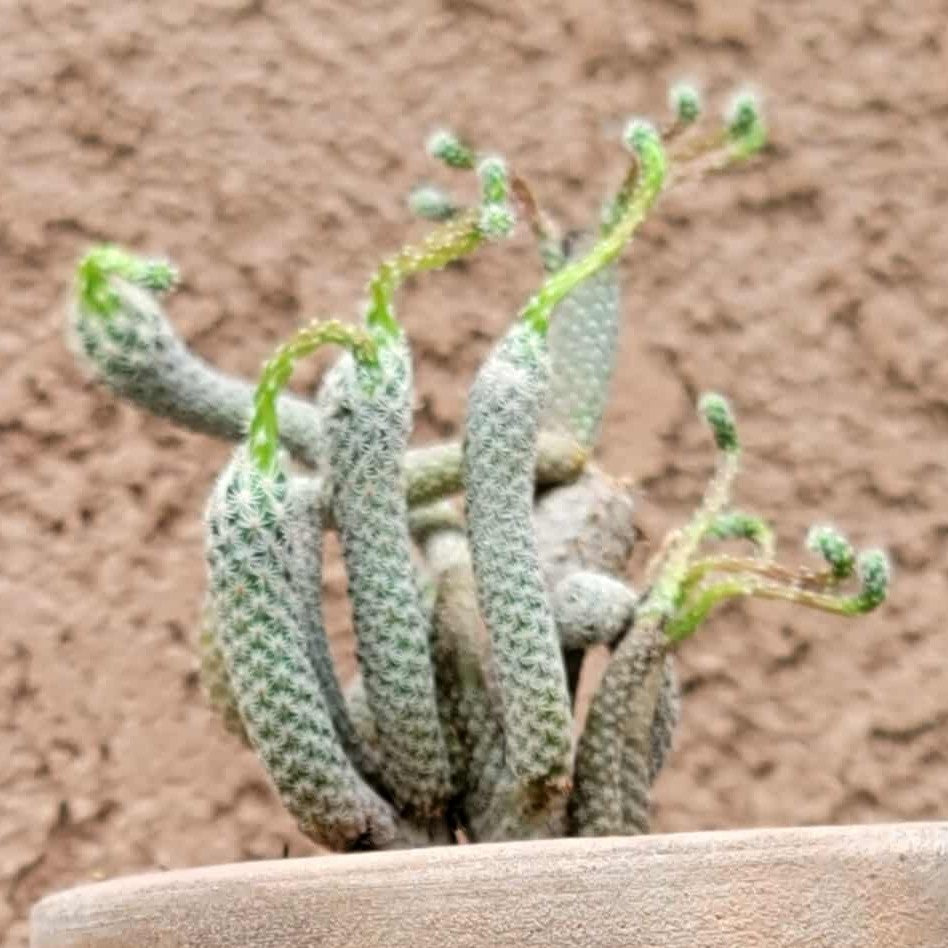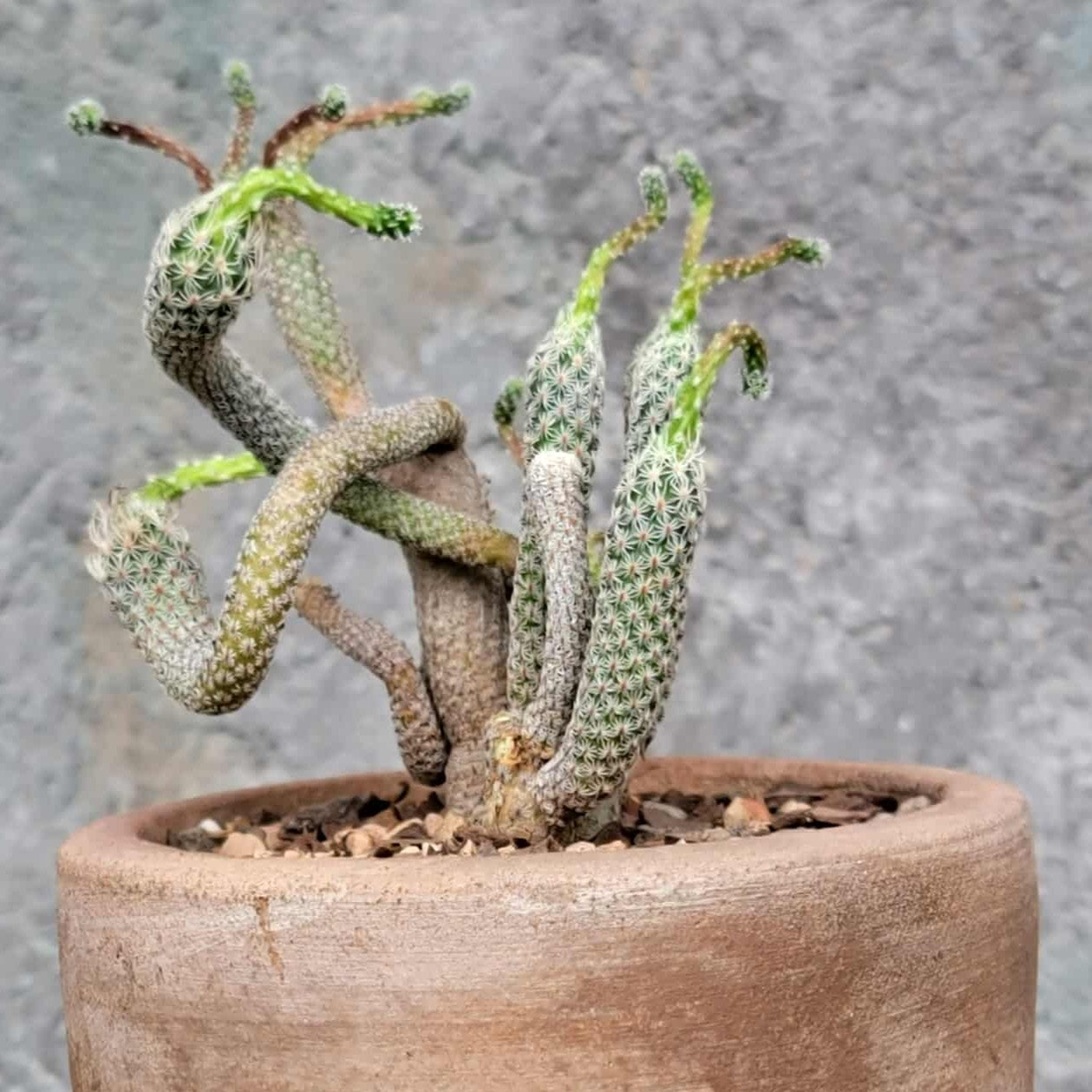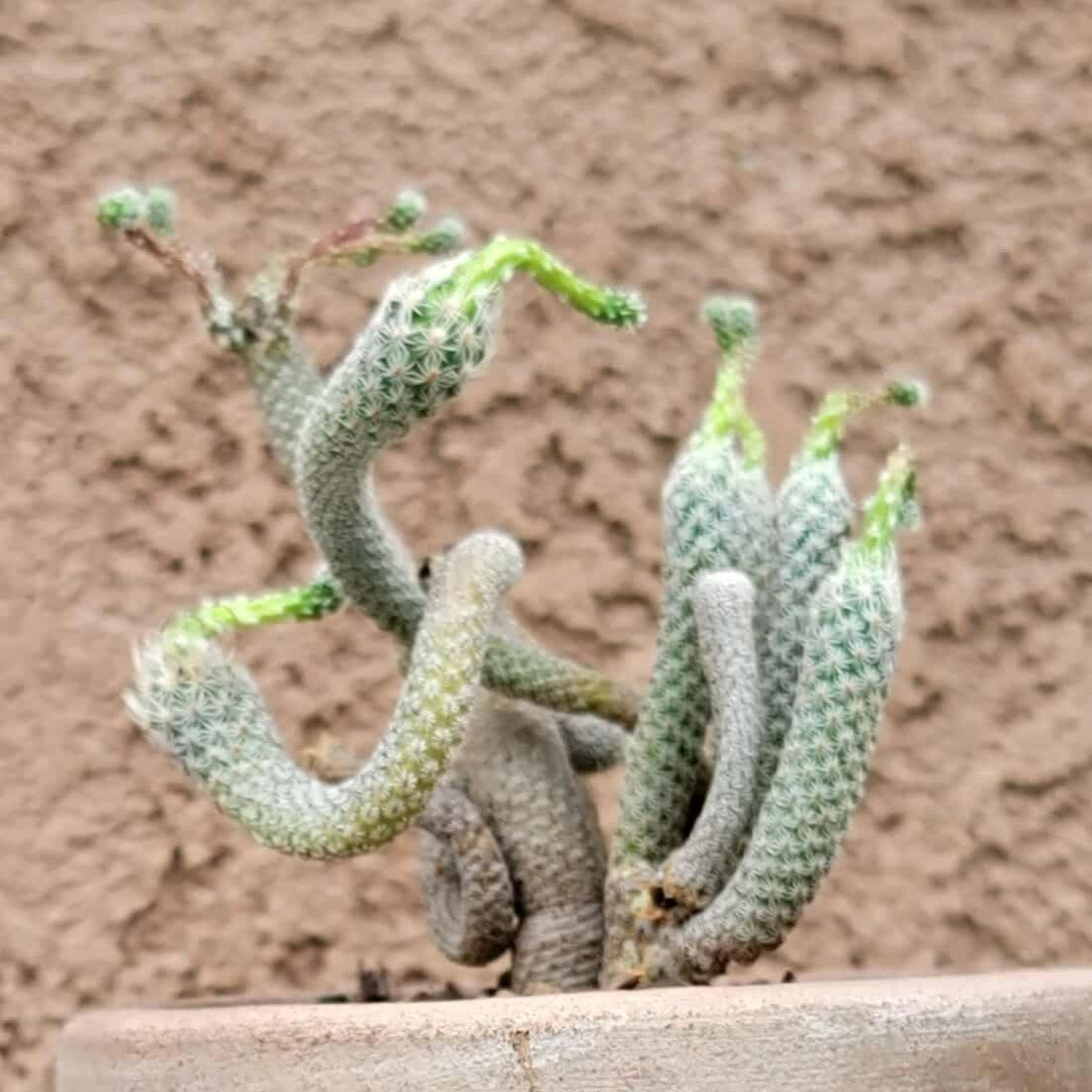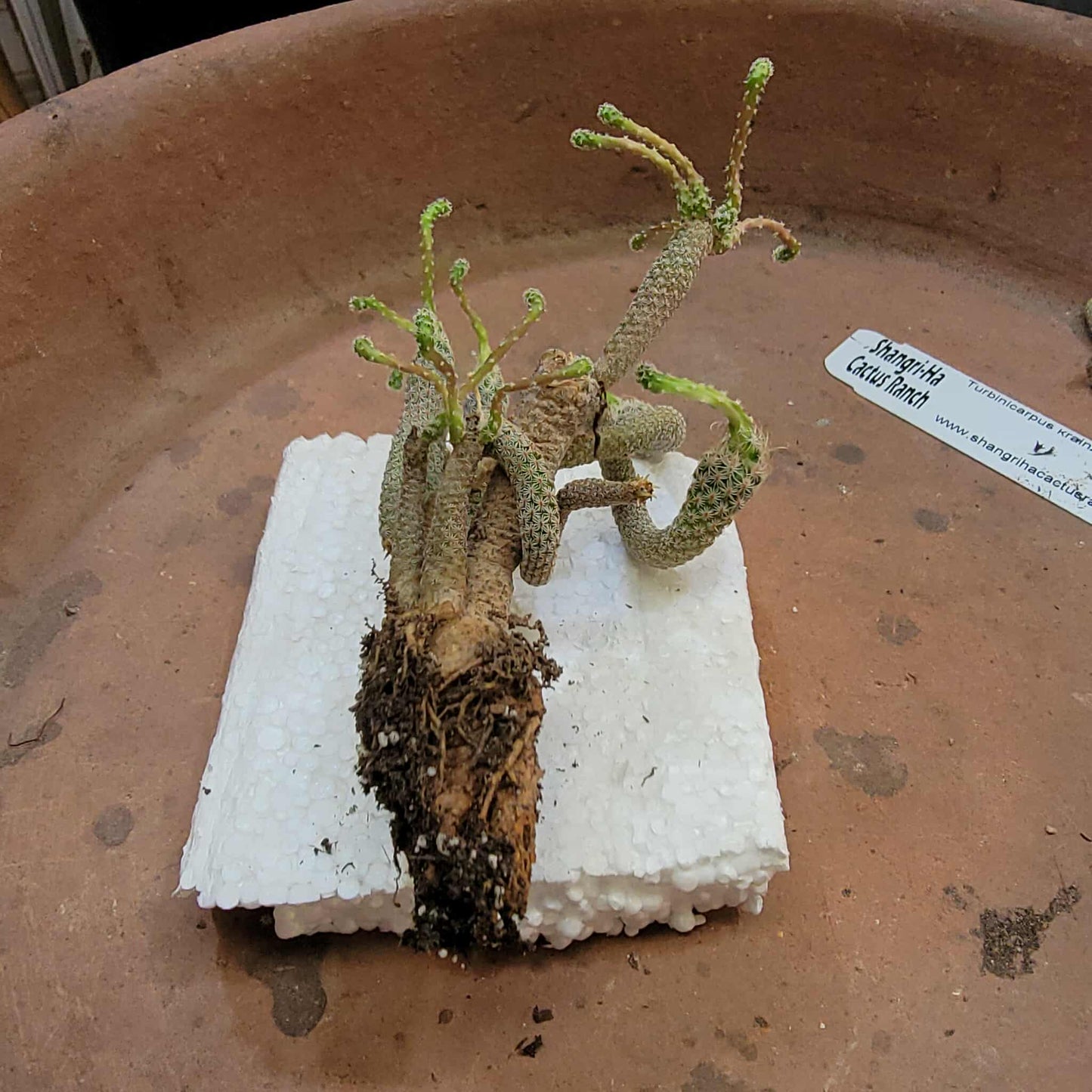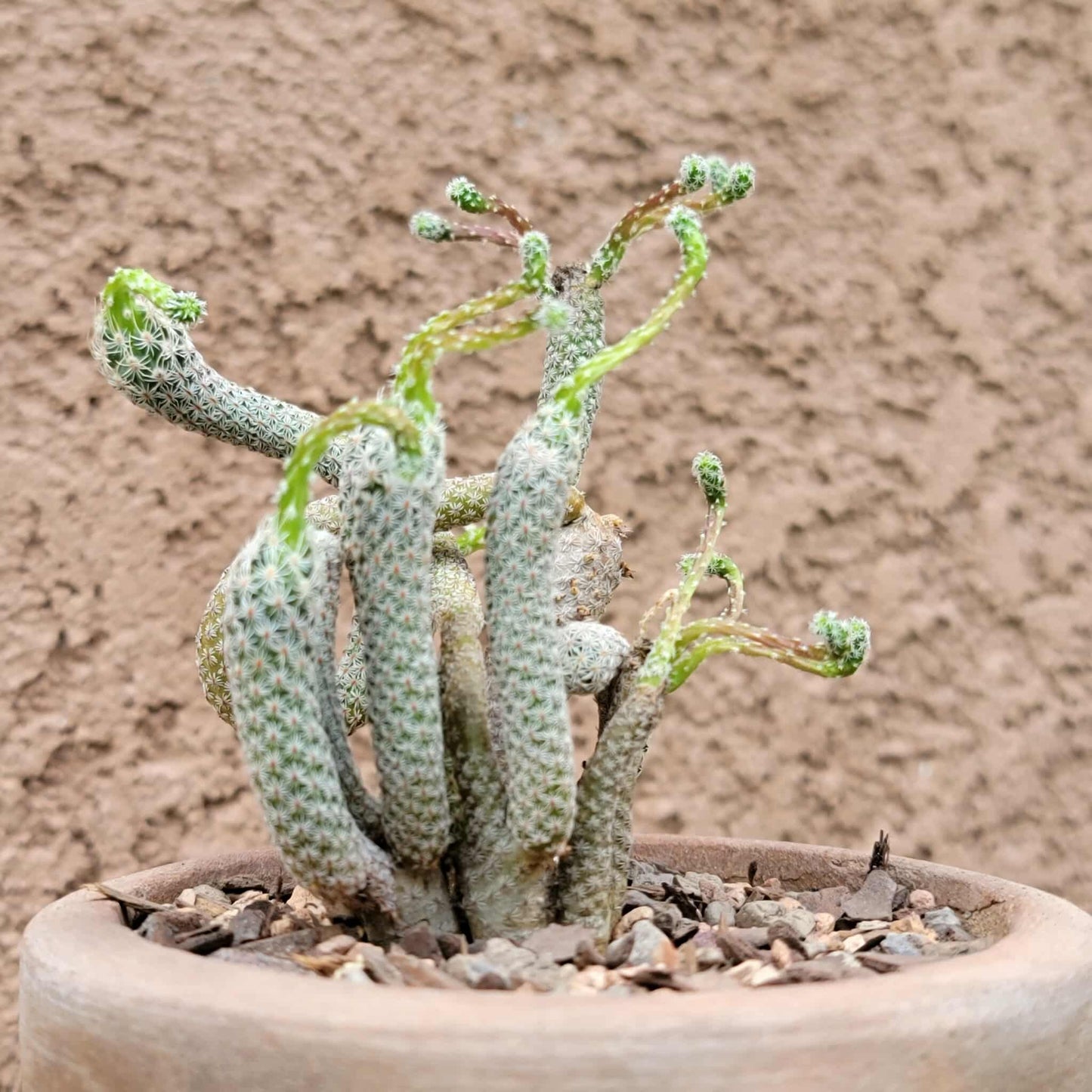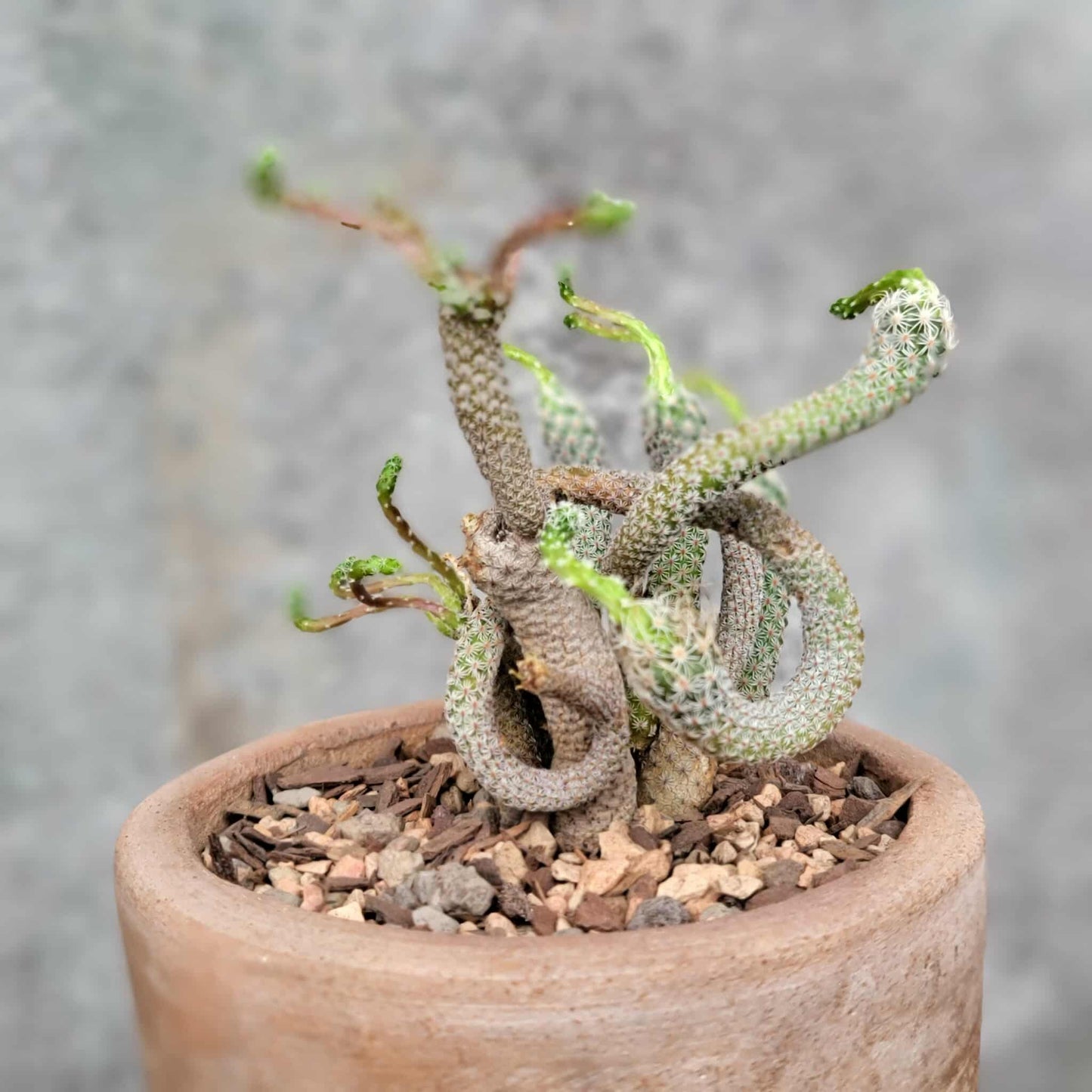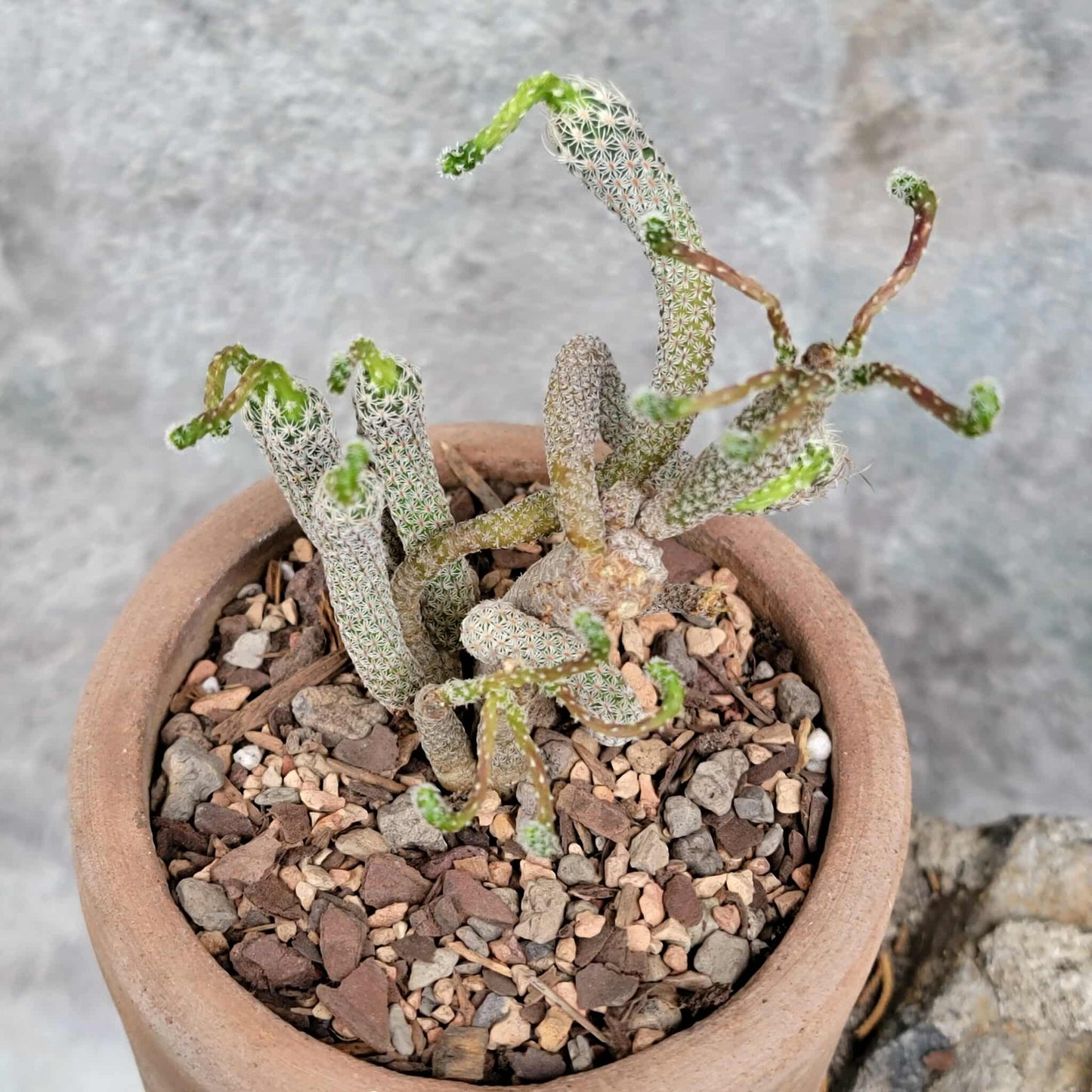Shangri-Ha Cactus Ranch
Turbinicarpus krainzianus
Turbinicarpus krainzianus
Couldn't load pickup availability
Turbinicarpus krainzianus
These rarities are so darling. Do you have one in your collection?
You will receive a specimen similar to the one shown here.
Measures approximately 4" wide.
Showcased here in cement planter (sold separately).
This is a very delicate variety. It's possible that a few stems may disconnect from the body during shipping or even afterwards. But don't worry, you can plant those alongside your main plant and grow new turbinicarpuses!
Roots as shown.
Will be shipped bare root.
Turbinicarpus krainzianus is a small, geophytic cactus from Mexico, now typically categorized as a subspecies of Turbinicarpus pseudomacrochele. It is known for its relatively safe, twisted spines and creamy-white to greenish-yellow flowers.
TAXONOMY
While sometimes seen under the name Turbinicarpus krainzianus, it is more accurately classified as Turbinicarpus pseudomacrochele ssp. krainzianus. The different subspecies and forms of T. pseudomacrochele vary slightly in appearance:
· T. pseudomacrochele ssp. krainzianus: Features a dark green stem, tapering tubercles, and smaller, yellowish-cream or greenish-yellow flowers.
· T. pseudomacrochele ssp. pseudomacrochele: Has a lighter green, fatter stem with low tubercles and larger, white or rose-colored flowers.
· T. pseudomacrochele ssp. minimus: Similar to ssp. krainzianus but generally smaller, with a stem 8–12 mm in diameter.
KEY CHARACTERISTICS
· Stem: Elongated and cylindrical, typically up to 4 cm high and 8–12 mm in diameter, though cultivated specimens can grow larger. It has a dark green body with spirally arranged ribs.
· Spines: Young plants have thin, white radial spines. As the cactus matures, it develops longer, central spines (12–30 mm long) that are wiry and twisted, giving it a fuzzy look.
· Flowers: Diurnal (open during the day) and apical, growing up to 2 cm long with 12–16 narrow petals. The color is typically yellow-cream or greenish-yellow.
· Root: The plant grows from a large, napiform (turnip-like) tuberous root.
CARE REQUIREMENTS
· Soil and pot: Use a well-draining mineral potting mix and a pot with drainage holes to prevent root rot.
· Light: Provide strong, bright light, but protect the cactus from intense, direct sunlight, especially during the hottest parts of the day.
· Watering: Water infrequently during the growing season (spring and summer), allowing the soil to dry out completely between waterings. Overwatering is a common issue and can cause the plant to crack or rot. Keep it dry during its winter dormancy.
· Ventilation: Good air circulation is essential for preventing rot.
· Temperature: It prefers warmth and is not frost-tolerant, though a very dry plant can survive a light frost for a short time.
· Propagation: Typically reproduced by seed or by grafting, as it rarely produces offsets. Seedlings are best grown in high humidity for the first couple of weeks.
HABITAT & CONSERVATION
· Native range: The subspecies is native to northeastern Mexico, with Turbinicarpus species found in states like Querétaro, San Luis Potosí, and Hidalgo. The specific distribution of T. pseudomacrochele ssp. krainzianus is uncertain but includes the Sierra del Doctor in Querétaro.
· Conservation status: The species is listed as Vulnerable on the IUCN Red List, threatened by habitat loss and over-collection.
